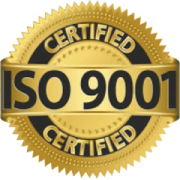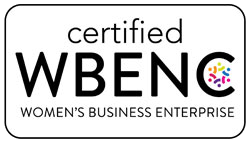Assistance and deliver solutions specific to each customer
At A Glance
We are a reputable and established chemical company specializing in the manufacture and export of high-purity Liquid Mercury and a wide range of other industrial chemicals. With years of experience and in-depth industry knowledge, we have become a trusted supplier of verified and documented chemical products, serving clients worldwide.
Our core product line includes Liquid Mercury, along with other essential chemicals such as boric acid, crude iodine, immersion oil, magnesium metal, and more. We prioritize safety, quality, and regulatory compliance in every aspect of our operations, ensuring that all our products meet international standards.
As a global manufacturer, exporter, and supplier, we offer over 14,000 chemicals, solvents, stains, and indicatorsacross various grades, including LR/AR, HPLC, and UV. Our high-quality mercury and related products are used in laboratories, industrial processes, and specialized applications across multiple sectors.
We are committed to providing reliable supply, consistent product quality, and excellent customer support, making us a preferred partner in the international chemical market.
Our unwavering commitment to quality, innovation, and customer satisfaction has made us a trusted supplier in the mercury industry. We serve clients across the globe with fast, reliable, and tailored mercury solutions that help businesses operate efficiently and safely. Backed by a strong international supply network and a customer-focused approach, we support a wide range of industries—including research laboratories, mining, manufacturing, and chemical processing. Every mercury product we supply comes with a Certificate of Analysis (COA), Safety Data Sheet (SDS), and the highest standard of service, reinforcing our reputation for reliability, compliance, and excellence.
Our Company
Fast Growing Chemical Laboratory
We provide an extensive range of high-purity chemicals, featuring a comprehensive inventory of ACS, USP, HPLC, Semiconductor/Electronic Grade, and LCMS grade chemicals. Our products meet the rigorous standards demanded by various industries, ensuring precise and reliable performance for critical applications. Our portfolio includes specialized items such as silver liquid mercury, mercury nitrate, and red mercury, all backed by COA and SDS documentation.
To ensure full transparency and compliance, we offer Certificates of Analysis (COA), Safety Data Sheets (SDS), and other essential product documentation, all readily available online for quick and easy verification.
We understand the critical role our chemicals play in the success of our clients, and we are proud to support industries worldwide with the finest solutions.

Bundrick PharmD
Founder

Therapeutic Areas of Focus
Mercury Exposure Risks: Understand and Prevent
Mercury, also known as quicksilver, is a naturally occurring element found in the Earth’s crust. It is distinguished by its shiny, silver appearance and is the only metal that is liquid at room temperature. Mercury is often used in scientific instruments, electrical switches, and industrial processes. Despite its usefulness, mercury’s toxic properties make it a substance of concern.
Properties of Mercury
Mercury’s unique characteristics make it both valuable and hazardous. Its ability to remain liquid at room temperature allows it to conduct electricity efficiently and respond to temperature changes. However, these same properties enable mercury to evaporate into the air easily, increasing the risk of inhalation exposure. Understanding these properties helps us appreciate why mercury is so widely used and yet so hazardous.
Industrial and Historical Uses
Throughout history, mercury has been utilized in various industries due to its unique properties. In the past, it was used in medicines, hat-making, and even in the production of mirrors. Today, while some applications have been phased out due to safety concerns, mercury is still used in dental amalgams, fluorescent lighting, and some manufacturing processes. This historical perspective highlights the transition from widespread use to more regulated applications.
Environmental Presence
Mercury is a naturally occurring element found in rocks, soils, and water bodies. It can be released into the environment through natural processes such as volcanic eruptions and weathering of rocks. Human activities have significantly increased mercury’s presence in the environment, leading to contamination of air, water, and soil. This widespread presence underscores the importance of understanding and managing mercury’s environmental impact.
Types of Mercury
Mercury exists in several forms, each with distinct properties and implications for health and the environment.
Elemental Mercury (Hg0)
Elemental mercury, often referred to as liquid mercury or quicksilver, is the metallic form of mercury. It is commonly used in thermometers, barometers, and some electrical switches due to its conductive properties. However, when spilled, elemental mercury can evaporate and form toxic vapors, posing inhalation risks. This form of mercury is particularly concerning in indoor environments where ventilation is limited.
Inorganic Mercury Compounds
Inorganic mercury compounds form when mercury combines with elements like sulfur or oxygen. These compounds are found in products such as batteries and fluorescent lamps. They can also result from industrial processes, including mining and cement production. Inorganic mercury compounds are less volatile than elemental mercury but can still pose health risks through skin contact and ingestion.
Organic Mercury Compounds
Organic mercury compounds, such as methylmercury, form when mercury binds with carbon. Methylmercury is particularly notorious for its ability to bioaccumulate in aquatic food chains, leading to significant exposure through fish consumption. These compounds are highly toxic and can affect the nervous system, making them a major concern for human health. Understanding the pathways of organic mercury exposure is crucial for mitigating its risks.
Awards & Recognition

2000

2010

2015

2019

2012

2022

2017

